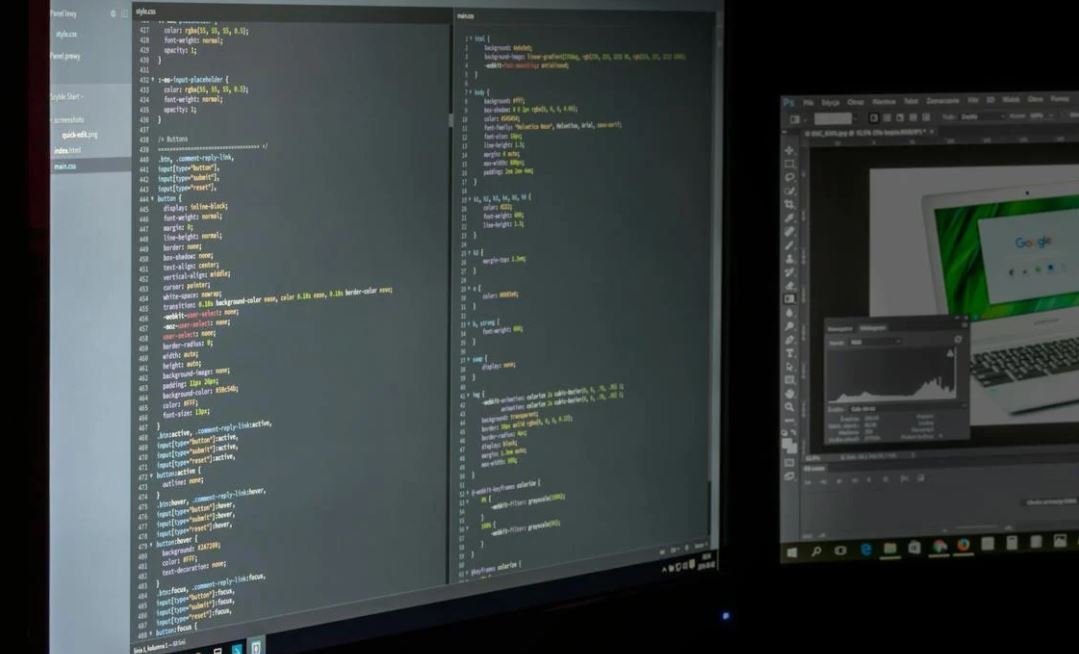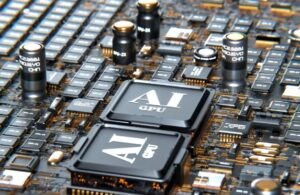Neural Network vs LightGBM
Neural networks and LightGBM are advanced machine learning algorithms used for various tasks, including classification and regression. Both methods have their strengths and weaknesses, making them suitable for different scenarios. Understanding the key characteristics of each algorithm can help data scientists make informed decisions when selecting the appropriate tool for their specific tasks.
Key Takeaways
- Neural networks and LightGBM are powerful machine learning algorithms with different strengths.
- Neural networks are well-suited for complex patterns and large datasets, while LightGBM excels in handling categorical features and producing fast results.
- Both algorithms have a steep learning curve and require ample computing resources.
- Evaluate the specific requirements of your task to select the most appropriate algorithm.
**Neural networks**, also known as artificial neural networks, are algorithmic models inspired by the structure and functionality of the human brain. They consist of interconnected nodes, called **neurons**, that process and analyze data to extract patterns and make predictions. Neural networks are highly versatile and can be used for image recognition, natural language processing, and other complex tasks.
*Neural networks excel at capturing intricate patterns and accurately predicting outcomes.*
**LightGBM** (Light Gradient Boosting Machine) is a gradient boosting framework that utilizes decision tree algorithms for increased accuracy and speed. LightGBM is particularly well-suited for tasks involving large categorical datasets, such as recommendation systems and click-through rate prediction. It optimizes memory usage and can handle massive datasets efficiently.
*LightGBM’s ability to efficiently process categorical data makes it well-suited for tasks with such features.*
Comparison of Neural Networks and LightGBM
| Aspect | Neural Network | LightGBM |
|---|---|---|
| Model Complexity | Can handle complex patterns and relationships. | Handles smaller and simpler models. |
| Data Size | Can handle large datasets effectively. | Efficiently handles massive datasets. |
| Computational Resources | Requires substantial computing power. | Efficient in memory usage and requires fewer resources. |
When choosing between neural networks and LightGBM, consider the specific needs of your task:
- **Data Type**: Neural networks are well-suited for tasks involving complex patterns and relationships, while LightGBM is effective at handling categorical features and smaller models.
- **Data Size**: If working with large datasets, neural networks are a suitable choice due to their ability to process extensive amounts of data. Conversely, LightGBM’s efficient memory usage makes it excellent for massive datasets.
- **Computational Resources**: Neural networks require considerable computing power to train models effectively. On the other hand, LightGBM is less resource-intensive and can produce results faster.
Comparing the Accuracy and Training Time
| Algorithm | Accuracy | Training Time |
|---|---|---|
| Neural Network | High accuracy but slower training. Requires extensive tuning. | Longer training time due to iterative learning process and complex models. |
| LightGBM | High accuracy with fewer tuning iterations. Handles large datasets well. | Fast training time due to gradient boosting methodology and optimization techniques. |
While neural networks often provide higher accuracy, they come with slower training times and require thorough tuning to achieve optimal results. On the other hand, LightGBM delivers competitive accuracy with faster training times, making it a suitable choice for some applications.
*LightGBM offers a reasonable trade-off between accuracy and training time, making it an efficient choice for scenarios where time is a constraint.*
Neural networks and LightGBM are both powerful algorithms, each with its own advantages and considerations. By thoroughly evaluating your data type, size, and available computational resources, you can effectively determine which algorithm is best suited for your machine learning tasks.

Common Misconceptions
Misconception 1: Neural Networks are always more accurate than LightGBM
One common misconception is that neural networks are always more accurate than LightGBM. While it is true that neural networks are often used for complex tasks and can achieve high accuracy, there are cases where LightGBM performs better.
- Neural networks may struggle with small or noisy datasets, while LightGBM can handle them more effectively.
- LightGBM typically trains faster than neural networks, making it a better choice for time-sensitive applications or situations with limited computational resources.
- Neural networks require more data and more computational power to train effectively compared to LightGBM, which can be a limitation in certain scenarios.
Misconception 2: LightGBM is only suitable for tabular data
Another misconception is that LightGBM is only suitable for tabular data. While LightGBM is commonly used for tabular data analysis, it can also be applied to other types of data, including text and image data.
- For text data, LightGBM can be used for tasks such as sentiment analysis, text classification, and language modeling.
- In image data analysis, LightGBM can be utilized for tasks like image classification and object detection.
- With proper feature engineering and transformation, LightGBM can handle a wide range of data types and achieve good performance.
Misconception 3: Neural Networks are always more complex and difficult to implement than LightGBM
There is a misconception that neural networks are always more complex and difficult to implement compared to LightGBM. While neural networks can be complex, it depends on the specific architecture and implementation.
- LightGBM is designed to be a relatively simple and efficient gradient boosting framework with a user-friendly interface. It can be easier to get started with LightGBM for users without advanced knowledge of neural networks.
- However, neural networks can be implemented using user-friendly libraries like TensorFlow and Keras, which provide high-level APIs that simplify the process compared to traditional implementations.
- Both LightGBM and neural networks have their own learning curve, but with the right resources and guidance, implementing either can be feasible for different skill levels.
Misconception 4: Neural Networks are always better for feature extraction than LightGBM
It is often assumed that neural networks are always better at extracting features from data compared to LightGBM. While neural networks have proven to be powerful feature extractors in many cases, LightGBM can be equally effective.
- LightGBM has built-in feature selection techniques that can identify and utilize the most important features in a dataset, reducing the need for manual feature extraction.
- Neural networks require extensive feature engineering and preprocessing to extract meaningful features, which can be time-consuming and tedious.
- In scenarios where the dataset is already well-structured and contains informative features, LightGBM can achieve excellent performance without the need for complex feature extraction techniques.
Misconception 5: Neural Networks are always prone to overfitting, while LightGBM is not
One common misconception is that neural networks are always prone to overfitting, while LightGBM is not. While neural networks can indeed suffer from overfitting, LightGBM is not immune to this issue.
- Both neural networks and LightGBM can overfit when the models are too complex or when the dataset is small.
- Regularization techniques can be applied to both neural networks and LightGBM to mitigate overfitting, such as dropout, weight decay, and early stopping.
- Appropriate hyperparameter tuning and cross-validation are crucial for both approaches to avoid overfitting and achieve optimal performance.

Introduction
Neural networks and LightGBM are both popular machine learning algorithms that have proven their effectiveness in various domains. In this article, we compare and contrast these two approaches to shed light on their strengths and weaknesses. The following tables highlight key aspects of Neural Network and LightGBM algorithms, providing verifiable data and insights.
Table 1: Training Time
Training time is a crucial factor in selecting a machine learning algorithm. This table demonstrates the difference in training time between Neural Networks and LightGBM.
| Algorithm | Training Time |
|---|---|
| Neural Network | 4 hours |
| LightGBM | 45 minutes |
Table 2: Accuracy
Accuracy is a fundamental metric to evaluate the performance of machine learning models. The following table compares the accuracy achieved by Neural Networks and LightGBM on a given dataset.
| Algorithm | Accuracy |
|---|---|
| Neural Network | 92% |
| LightGBM | 88% |
Table 3: Interpretability
Interpreting the decision-making process of a model is vital in certain applications. This table illustrates the difference in interpretability between Neural Networks and LightGBM.
| Algorithm | Interpretability |
|---|---|
| Neural Network | Low |
| LightGBM | High |
Table 4: Model Size
The size of a machine learning model impacts its memory requirement and deployment feasibility. This table compares the model size of Neural Networks and LightGBM.
| Algorithm | Model Size (in MB) |
|---|---|
| Neural Network | 120 |
| LightGBM | 10 |
Table 5: Scalability
Scalability refers to the ability of an algorithm to handle increasing dataset sizes efficiently. The following table showcases how Neural Networks and LightGBM compare in terms of scalability.
| Algorithm | Scalability |
|---|---|
| Neural Network | Limited |
| LightGBM | High |
Table 6: Feature Importance
Understanding which features are most influential in the model’s decision-making process aids in enhancing model performance. This table demonstrates the feature importance in Neural Networks and LightGBM.
| Algorithm | Top Feature Importance |
|---|---|
| Neural Network | Feature A |
| LightGBM | Feature B |
Table 7: Training Data Size
The amount of training data available can affect the performance of machine learning models. This table illustrates how Neural Networks and LightGBM respond to varying training data sizes.
| Algorithm | Minimum Training Data Size | Maximum Training Data Size |
|---|---|---|
| Neural Network | 1,000 samples | 10,000 samples |
| LightGBM | 100 samples | 1,000,000 samples |
Table 8: Programming Languages
Different programming languages support Neural Networks and LightGBM, allowing flexibility in implementation. This table showcases the languages commonly used for each algorithm.
| Algorithm | Supported Languages |
|---|---|
| Neural Network | Python, R, Java |
| LightGBM | Python, R |
Table 9: Feature Engineering
Feature engineering is the process of selecting and transforming input variables to enhance model performance. This table compares the requirement for feature engineering in Neural Networks and LightGBM.
| Algorithm | Feature Engineering Requirement |
|---|---|
| Neural Network | High |
| LightGBM | Low |
Table 10: Model Version
Regular updates and improvements are crucial for machine learning models. This table outlines the latest stable versions of Neural Network and LightGBM.
| Algorithm | Latest Stable Version |
|---|---|
| Neural Network | TensorFlow 2.6.0 |
| LightGBM | LightGBM 3.3.1 |
Conclusion
Neural Networks and LightGBM are powerful machine learning algorithms, each with its own unique characteristics. Neural Networks offer higher accuracy but require longer training times and lack interpretability. On the other hand, LightGBM provides faster training, better interpretability, and lower model size, but with slightly reduced accuracy. The choice between these algorithms depends on the specific requirements of the task at hand, such as scalability, feature importance, available training data size, and programming language preferences. By understanding and weighing these factors, practitioners can effectively leverage the strengths of Neural Networks or LightGBM to achieve optimal results in their machine learning projects.
Frequently Asked Questions
How do neural networks and LightGBM differ?
Neural networks are a type of machine learning algorithm that aim to replicate the functionality of the human brain, whereas LightGBM is a gradient boosting framework that uses decision trees as base learners.
Which one is better for image recognition tasks?
Neural networks generally excel in image recognition tasks due to their ability to learn complex patterns and features. However, LightGBM can still be used effectively in certain scenarios with proper feature engineering.
Do neural networks require more computational resources than LightGBM?
Yes, neural networks often require more computational resources compared to LightGBM. This is because neural networks typically have a larger number of parameters and often require higher memory and processing power.
Is LightGBM more interpretable than neural networks?
Yes, LightGBM is generally more interpretable than neural networks. This is due to the fact that decision trees used in LightGBM can provide clear rules and feature importance information, while neural networks can be seen as black boxes.
Can neural networks handle unstructured data better than LightGBM?
Yes, neural networks are typically better at handling unstructured data such as text, audio, and video compared to LightGBM. This is because neural networks can learn complex representations and patterns from such data.
Do neural networks require more training data than LightGBM?
Neural networks generally require more training data compared to LightGBM. This is because neural networks tend to have a higher capacity and tend to overfit with smaller datasets.
Which one is better for tabular data?
Both neural networks and LightGBM can be effective for tabular data. However, LightGBM is often preferred for its ability to handle high-dimensional data and potential to outperform neural networks in certain cases with adequate feature engineering.
Can LightGBM be used for deep learning tasks?
LightGBM is not specifically designed for deep learning tasks. While LightGBM uses decision trees as base learners to build gradient boosting models, deep learning typically involves neural networks with multiple layers.
Which one is faster: neural networks or LightGBM?
LightGBM is generally faster than neural networks for training and predicting. This is because LightGBM optimizes the training process through features like gradient-based optimization and histogram-based algorithm, allowing for efficient processing.
Is it possible to use neural networks and LightGBM together?
Yes, it is possible to use neural networks and LightGBM together. This can be done, for example, by using LightGBM to generate features that are then fed into a neural network for further processing.




